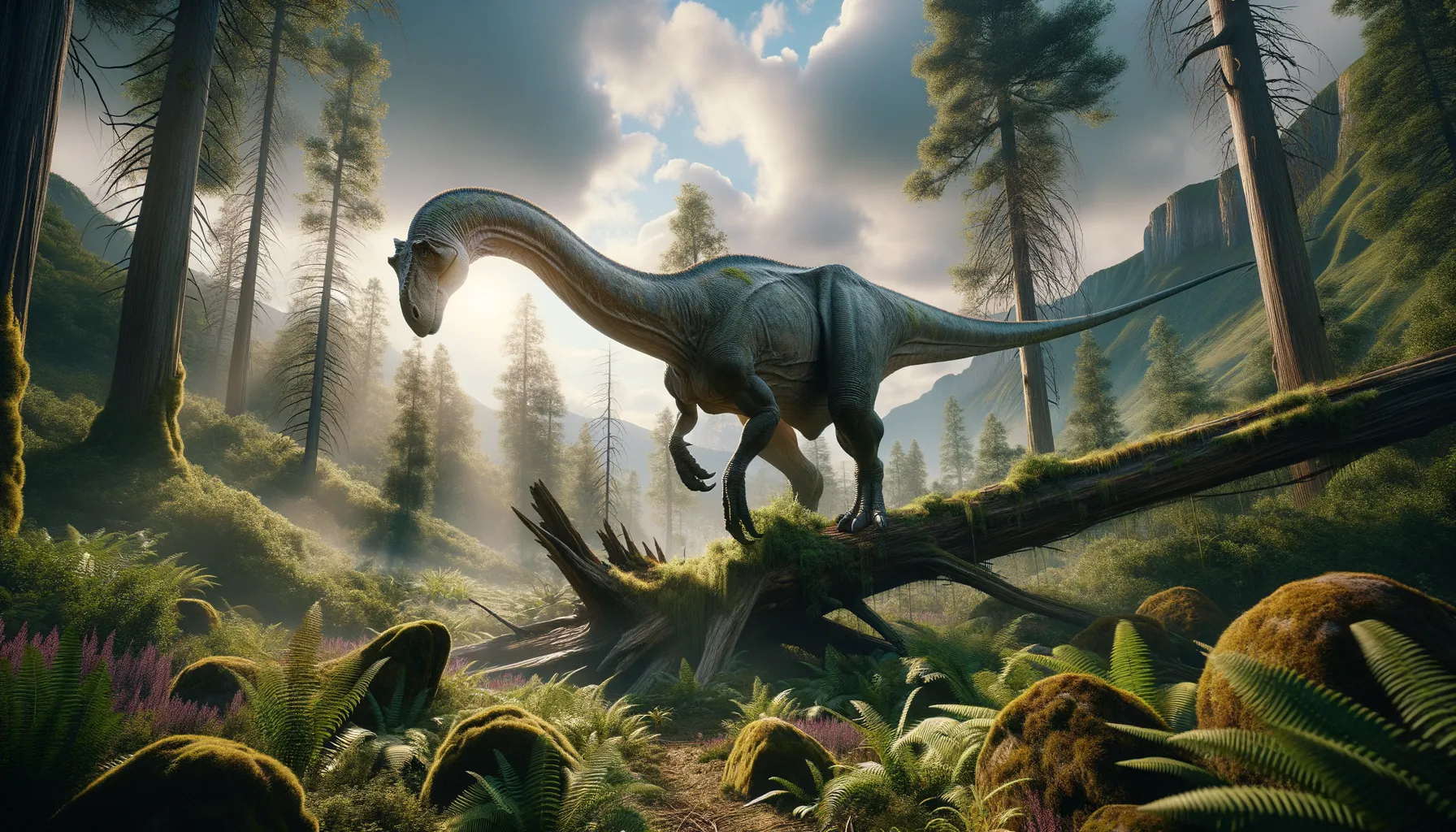
Zapalasaurus
Giant of the ancient South American lands.
Period
Cretaceous
Length
Up to 25 meters long.
Height
Around 6 meters tall.
Weight
Approximately 10 tons.
Zapalasaurus was a massive herbivorous dinosaur that roamed the ancient landscapes of present-day South America. Known for its immense size, it was a member of the sauropod family, characterized by a long neck and tail. This dinosaur lived during the Cretaceous period and has been primarily discovered in Argentina. Its size and shape suggest it was well-adapted to its environment, feeding on high vegetation in dense forests.
Diet
Zapalasaurus was an herbivore, primarily feeding on high-growing vegetation. Its long neck allowed it to reach leaves and soft plants from treetops that were inaccessible to smaller herbivores.
Hunting
Zapalasaurus did not hunt as it was an herbivore. Its size and strength provided defense against predators rather than relying on hunting tactics.
Environmental challenges
Zapalasaurus faced environmental challenges such as climate changes that impacted the vegetation they depended on. Predators also posed a threat, although their massive size offered some protection. They needed to find sufficient food sources to support their large bodies, making them sensitive to changes in their habitat's flora.
Speed
Likely slow-moving due to its large size.
Lifespan
Estimated to live several decades.
First discovery
Discovered in Argentina, early 21st century.
Fun Facts
- Zapalasaurus was a long-necked dinosaur that lived about 100 million years ago during the Early Cretaceous period.
- It was found in Argentina, specifically in the province of Neuquén, which is known for many dinosaur discoveries.
- Zapalasaurus is part of a group called sauropods, which were known for their huge bodies and long tails and necks.
- This dinosaur's name 'Zapalasaurus' comes from Zapala, a town near where its fossils were discovered.
- Unlike other dinosaurs, Zapalasaurus was a plant-eater, munching on leaves from tall trees with its long neck.
- The fossils of Zapalasaurus were first described by scientists in 2006, making it a relatively recent addition to our knowledge of dinosaurs.
Growth and Development
Young Zapalasaurus likely experienced rapid growth in their early years to reach the massive size typical of adults. The development stage may have been vulnerable to predation, requiring the protection of adults. Growth rates could have been influenced by the availability of food resources.
Habitat
Zapalasaurus inhabited forested areas in what is now South America, preferring regions with abundant plant life. These environments supplied the necessary food to sustain their large size. The habitat would have included a mix of open spaces and woodland, providing large herds with ample room to roam.
Interaction with other species
As a massive herbivore, Zapalasaurus likely interacted minimally with carnivorous species, primarily acting defensively. It could have coexisted with other herbivorous dinosaurs but competition for food resources might have occurred. The species might have relied on herd behavior for social interaction and mutual protection.
Natural lifespan
Zapalasaurus had a natural lifespan that could reach several decades.
Reproduction
Zapalasaurus likely reproduced by laying eggs, with nests possibly constructed in hidden or protective areas. Hatchlings would have been vulnerable at birth, requiring the presence of adults for deterrence against predators. Reproduction strategies might have included communal nesting sites to increase offspring survival.
Social behaviour
Zapalasaurus is believed to have traveled in herds, a common social behavior among large herbivorous dinosaurs. Herding offered protection from predators and may have facilitated the sharing of resources. This social structure could have included complex communication for coordinating movement and defense.
Fossil locations
The primary fossil remains of Zapalasaurus have been found in Argentina, specifically in Patagonia. This region is known for its rich deposits of dinosaur fossils and offers crucial insights into the diverse ecosystems of the Cretaceous period. The fossils provide vital data on the morphology and lifestyle of this sauropod genus.
